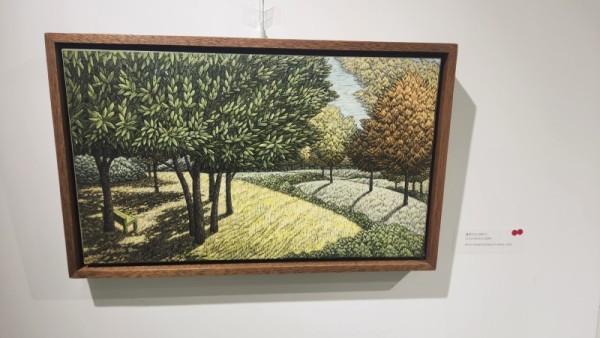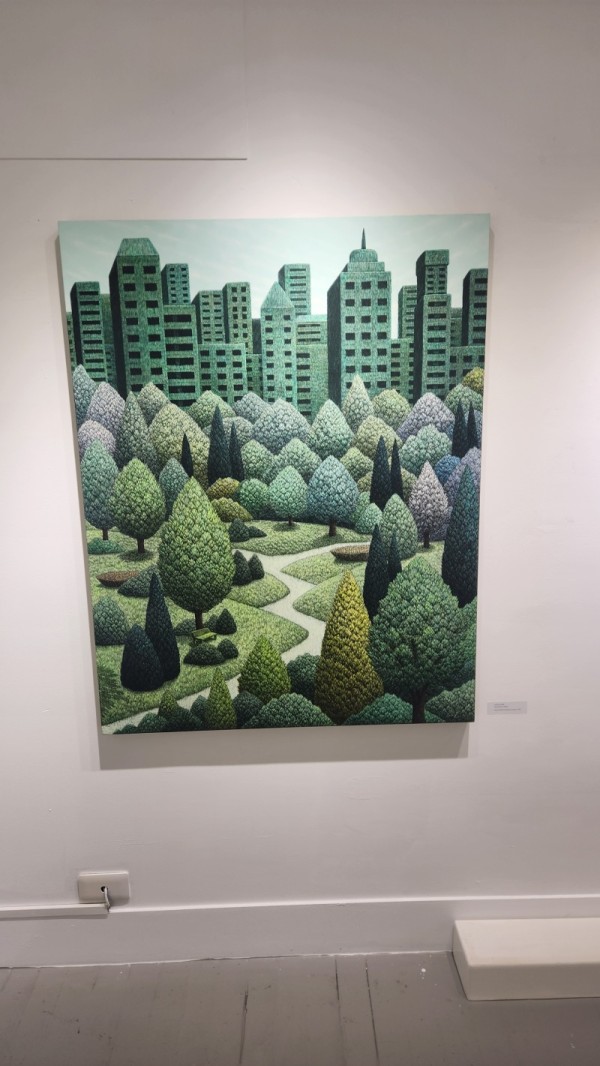
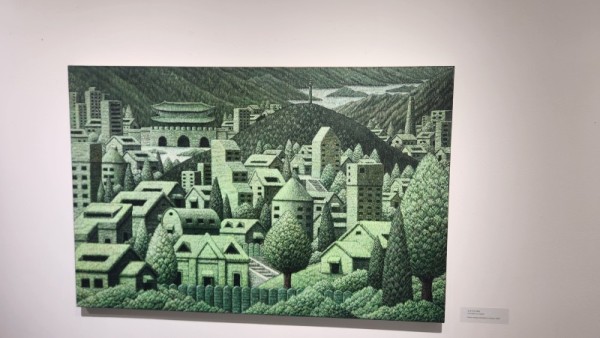
Gallery BODA (39-1 Insa-dong-gil) is currently hosting an exhibition by artist Han Jun-ho from south korea. The exhibition, which opened on the 19th of August, will run through until september 2nd.
Han Jun-ho, the artist, emphasizes the motif of trees throughout his works in this show.
Under the theme of "New Beginning," Han’s pieces feature tranquil trees planted across various settings, conveying a sense of peacefulness.
His artworks not only exhibit intricacy and sophistication but also evoke the most harmonious spaces on Earth, transporting viewers into serene, untouched environments.
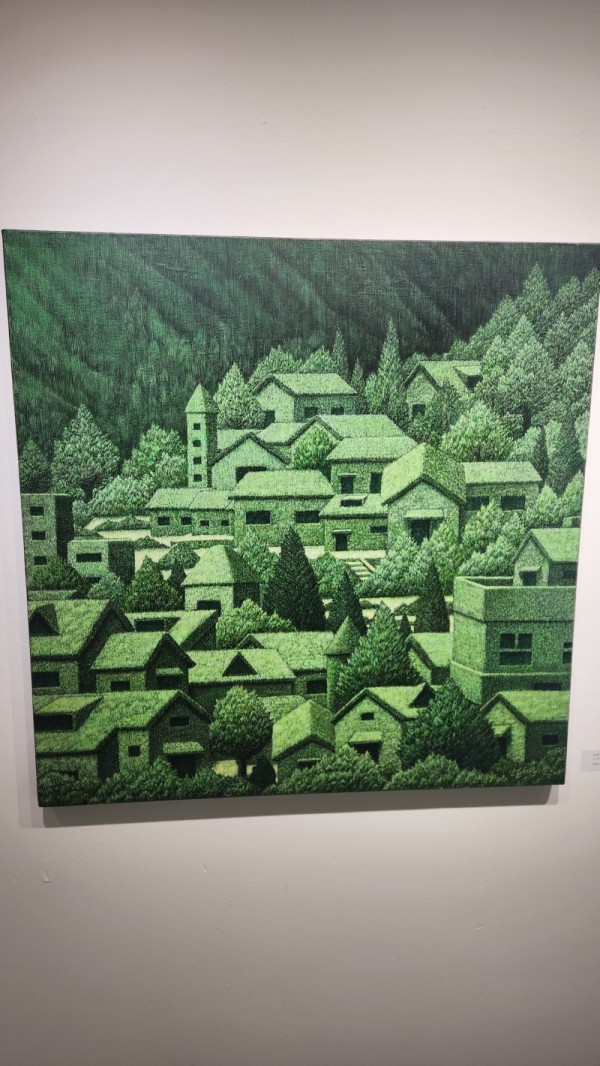
Han Jun-ho began painting relatively late in life at the age of 45, dedicating his remaining time after teaching students at school to his art.
He explained that his creative process typically involves laying a base of oil pastel on the canvas, covering it with black spray paint, and then scratching through the surface with a palette knife to achieve his final effect. About 90% of his work employs this scratch technique, with the remaining portions refined through adjustments and color corrections.
In this exhibition, Han aims to evoke the perspectives and life styles of American indians in the past attempting to provide viewers with a glimpse into their worldview.
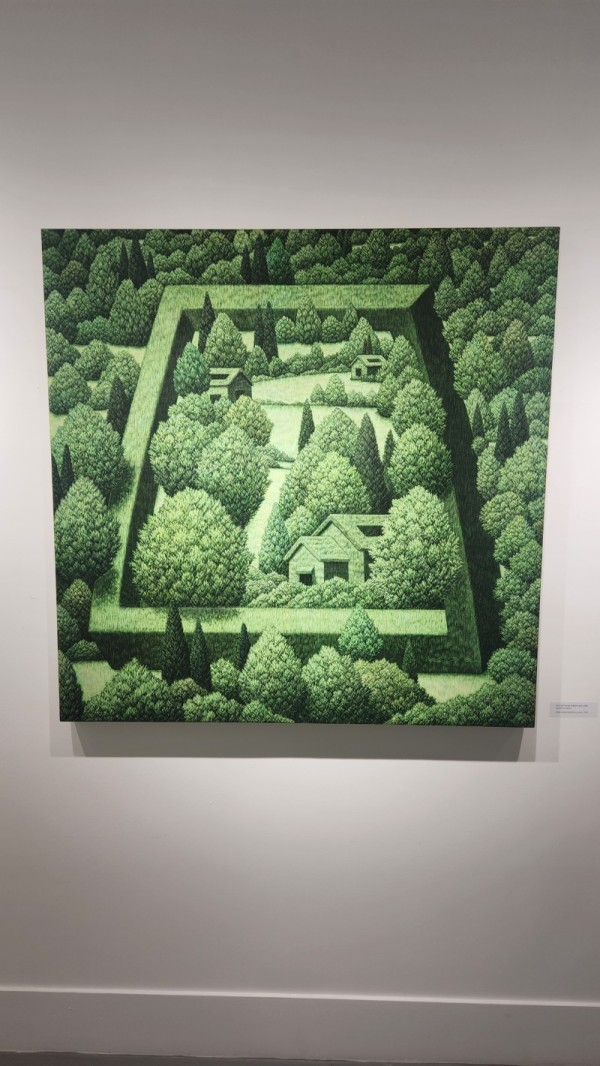
He remarked, “ American indians do not possess possessions in the usual sense. They live free from domination, control, and authority, and they avoid violence. When they hunt animals—often as part of rituals—they do so with respect and remorse. I want to evoke the concept of 'Kerenesia,' a place of refuge, and suggest that we too should create a sanctuary amidst our busy modern lives, finding moments of tranquility.”
Furthermore, Han highlighted, “Native Americans rarely resort to violence in warfare. They even avoid harming stones or anything unnecessary. I admire their approach, which emphasizes coexistence and the importance of taking breaks from relentless competition. I hope that modern society can learn to coexist peacefully and find respite from the constant struggle.”
His works inspired by Native American themes also incorporate symbolism related to Buddhist philosophy, with some pieces depicting the Möbius strip, symbolizing eternity and unity.
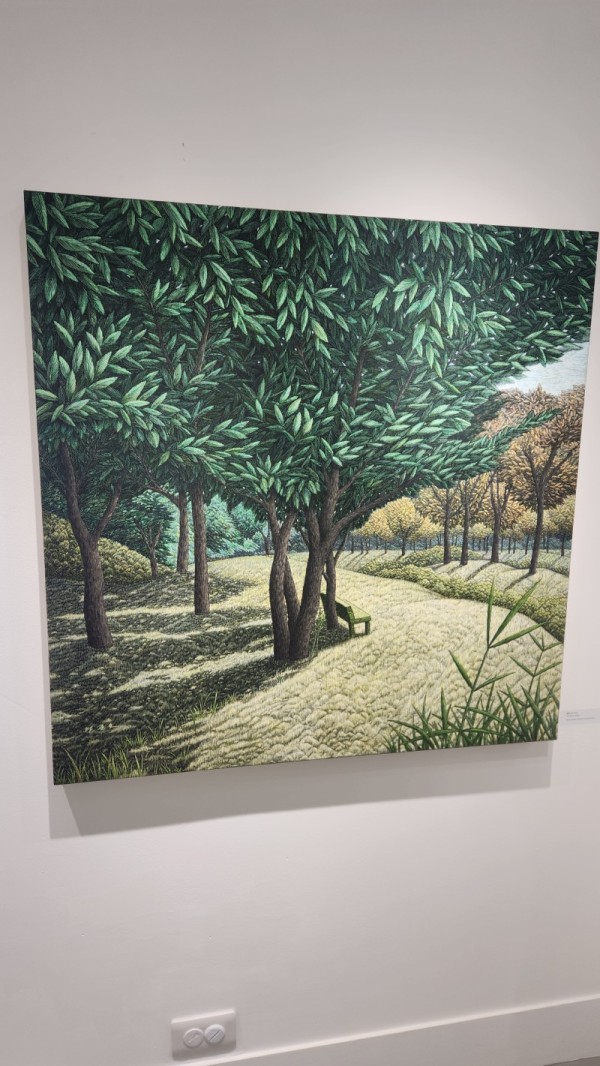
Han views this exhibition as a reflection of the virtue of “The Doctrine of the Mean,” portraying the attitude and mindset necessary to navigate life. He added, “Instead of materialistic happiness, we should sometimes buy fewer things—like two loaves of bread instead of three—and spend the rest on flowers to create beauty. In essence, we need to nourish ourselves with meaningful experiences.”
The artist also emphasized the importance of investing in the arts and fostering proper historical awareness among young people. “South Korea should increase cultural investments and develop educational programs that nurture the core values of art and history,” he stated. “Unlike Japan, where even artists without notable international awards can regularly exhibit and perform, Korea tends to focus on elite talent, overlooking a broader range of emerging artists. This narrow perspective may hinder the development of diverse talent in the long term.”
He further talked about Korea’s obsession with “K-culture,” suggesting that Koreans often chase trends and quickly abandon pursuits, which can limit the country's potential to establish a unique cultural identity on the global stage.
artist Han believes that if artists stick to their individual styles and explore their genuine interests, Korean culture could find a firm place within the international art scene.
Looking ahead, Han has plans to experiment with different techniques for his future works, although he acknowledged that his current methods are quite unique and unlikely to change soon.

Additionally, Han Jun-ho will participate in the upcoming Korea International Art Fair (KIAF), scheduled for next month. He graduated from Hongik University’s Department of Visual Design and is currently a faculty member at Dongseoul National University in south korea.
